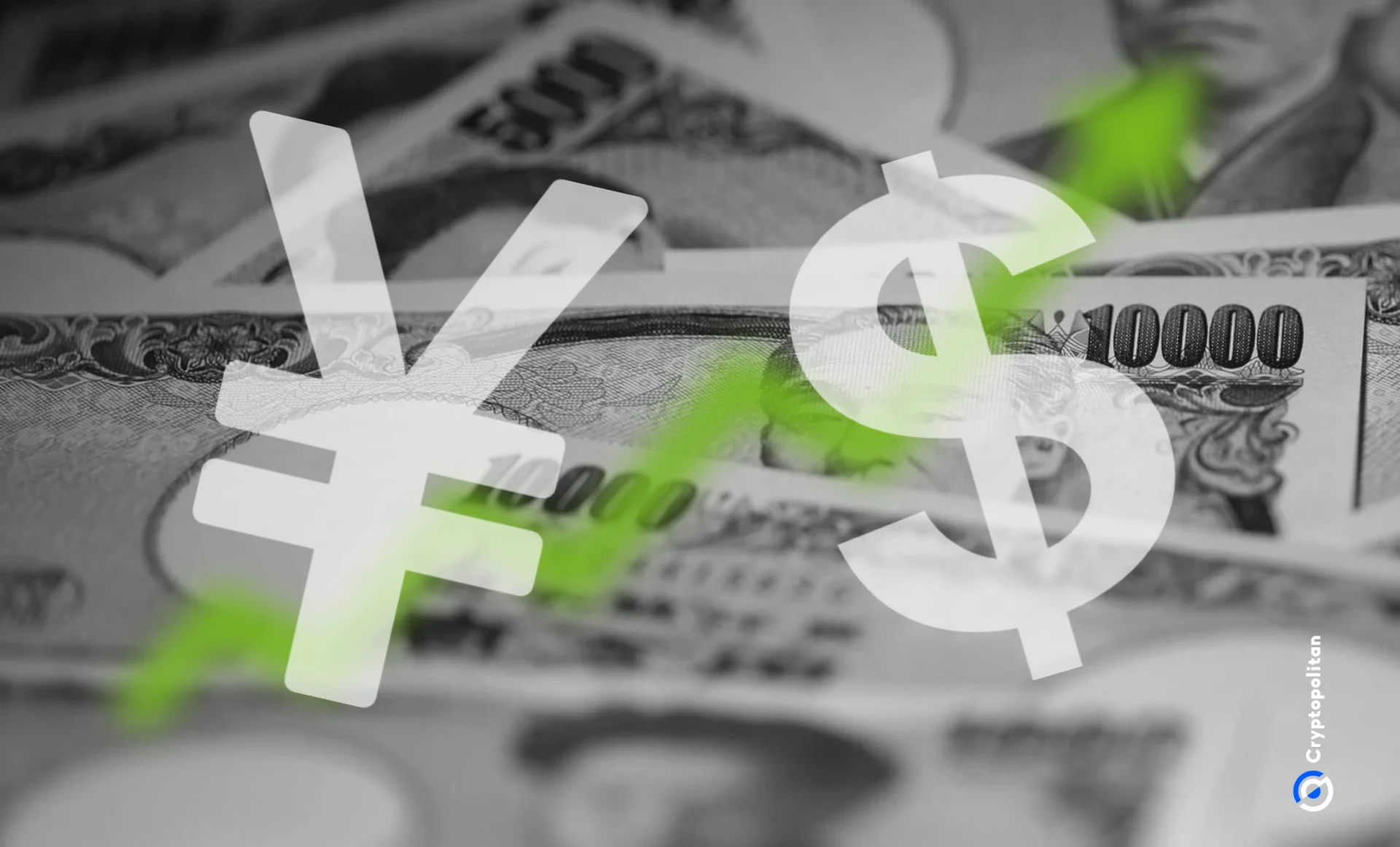The yen surged to its highest level in a year, pushing the dollar into a corner as the market braces for a potential bombshell from the Federal Reserve tomorrow.
Investors are betting big that the Fed might pull an unexpected move and deliver a far more aggressive cut than the widely expected 25-basis-point.
Right now, the dollar is down 0.10%, trading at 140.690 yen. This has rattled the futures market, which now predicts a 61% chance of a 50-basis-point cut, up from just 15% last week.

Market gets edgy, treasury yields plummet
US Treasury yields are sliding fast. Over the last two weeks, 10-year yields have fallen by 30 basis points.
On Monday, two-year Treasury yields—more directly tied to Fed policies—dropped another 2.5 basis points, landing at 3.5509%, after sitting at 3.94% just two weeks ago.
The DXY, which tracks the greenback against six major currencies, dropped 0.29% to 100.73. Other currencies took advantage of the dollar’s weakness.

The British pound jumped 0.64% to $1.3206, and the euro climbed 0.42%, hitting $1.1123. Marc Chandler, chief market strategist at Bannockburn Global Forex, said:
“Most of this action is the result of speculation over the Fed’s next move. The market was cool with a 25-basis-point hike, but now the idea of a 50-basis-point cut is fueling these swings.”
All eyes on the Bank of Japan
Investors are also keeping a close eye on the Bank of Japan (BOJ), which is set to announce its own interest rate decision on Friday.
While the BOJ is expected to keep its short-term policy rate unchanged at 0.25%, the narrowing gap between US and Japanese interest rates has pushed the yen higher.
This has triggered billions of dollars in unwinding yen-funded carry trades. The bank has already raised rates twice this year, and some of its board members want to raise them even higher.

“The market is pricing in the likelihood of more BOJ moves down the road,” said Chandler.
Meanwhile, the European Central Bank (ECB) cut its interest rate by 25 basis points last week, but ECB President Christine Lagarde has made it clear that another cut isn’t coming anytime soon.
Peter Kazimir, a member of the ECB’s Governing Council, said that the bank should wait until December before making another rate cut to avoid a policy mistake.
Is a soft landing coming?
The Fed’s rate decision comes at a time when inflation has been steadily cooling.
Inflation hit a peak of 9.1% in June 2022 but has since dropped to about 2.5% as of August, bringing it closer to the Fed’s long-term target of 2%.
The slowdown in inflation is partly due to improved supply chains, which had been wrecked by the pandemic and Russia-Ukraine conflict.
As those pressures eased, prices for goods dropped. Consumers are also switching back to pre-pandemic spending patterns, with a better focus on services over goods.
The unemployment rate stands at 3.6%, the lowest it’s been in over five decades. Job growth has been steady, with 43 straight months of employment gains.

The economy is humming along, with GDP growth averaging 2.9% since December 2020. For the third quarter of 2024, analysts expect growth to clock in around 2.5%.
Mortgage rates peaked at 7.2% in May 2024 but have since come down to about 6.2%, giving homebuyers some relief.
The drop in mortgage rates has increased purchasing power for buyers by about $70,000 for the same monthly payment compared to last year.
But oil prices are heating up again. Hurricane Francine disrupted production in the Gulf of Mexico, driving oil prices up by 2% as of September 16.
If this trend continues, consumers could feel the pinch at the pump. For now, gasoline prices in many states are below $3 per gallon, offering a bit of relief to drivers despite the spike in oil prices.
And consumer confidence remains strong, with spending staying steady.





